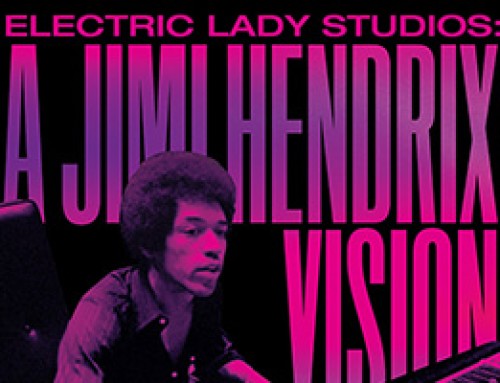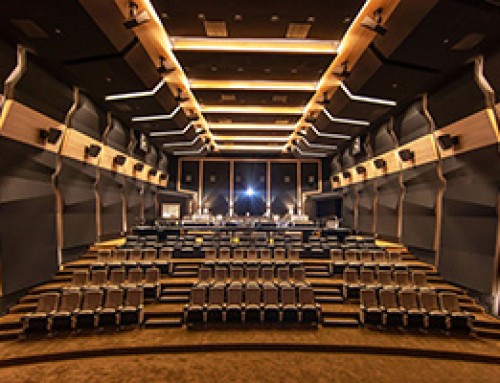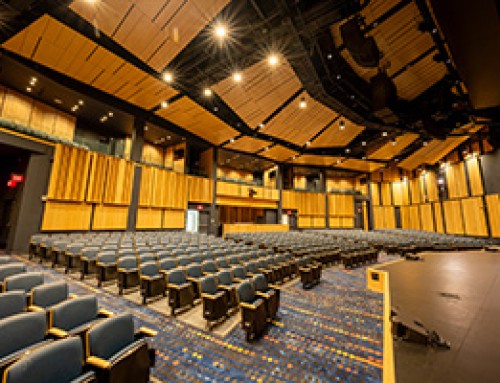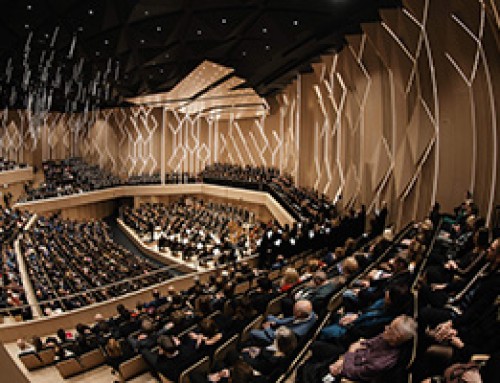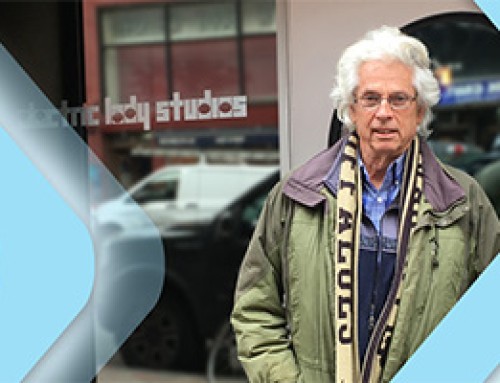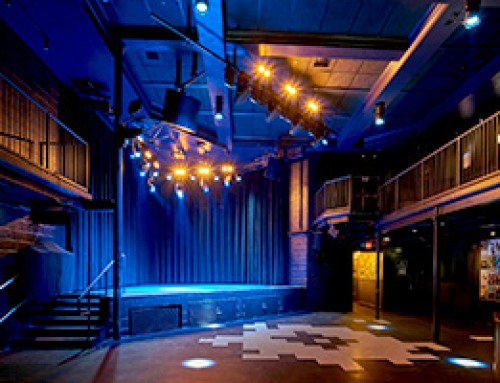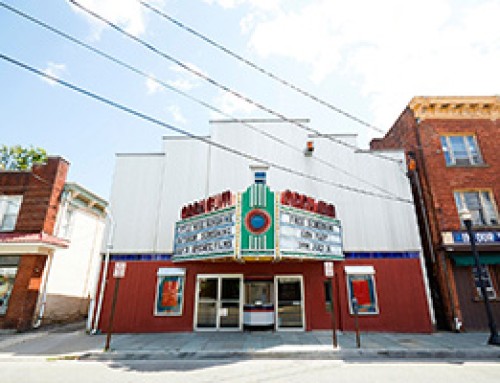For 28 years now, since the Paul Newman movie Nobody’s Fool was shot in Beacon and Hudson, we’ve been hearing about how the Hudson Valley was going to become the New Hollywood. The pot of gold at the end of that rainbow has been a long time coming. Year after year we’d get wind of some low-budget indie film or other being shot in our neck of the woods, prompting locals to grumble about road detours and other such inconveniences. Very few of them were seeing much added income from such projects.

L-R: Shelley Green, owner, Shadow Prop Supply; Khadeeja Lindsay, director of studio operations, Upriver Studios; Shoshana Gray, business director, Upriver Studios; Beth Davenport, co-founder, Stockade Works/Upriver Studios; Margie Verghese, set decoration buyer, North Center Productions/HBO. (Photo by Dion Ogust)
My, how things have changed in the past few years: More than $58 million was directly spent on filmmaking in the Hudson Valley in 2021 – despite COVID-19. In fact, it was partly the pandemic that helped drive major production houses such as Amazon Studios, HBO/HBO Max, Hulu, NBC Universal, Hallmark and Apple TV to turn their gazes north (and not only to acquire vacation homes at below-Hamptons prices). Studios were looking for environments where their casts and crews could be protected by stringent-but-affordable testing, cleaning and contact protocols, so that work could go on despite the ever-looming public health hazard. Our exurban region was able to provide such locations, and the Hudson Valley Film Commission (HVFC) even added a couple of new categories to its online resource directory for regional film and television production: medical teams and cleaning crews.
Many factors already made our Valley appealing to independent film producers: the easy commute from New York City; a strong concentration of “creatives” living in the area; business-hungry municipal governments eager to greenlight projects; plenty of services available that wouldn’t bust the budget. What was missing, in terms of the long-promised lucrative green industry that would boost the region’s economy in a way that would create real jobs and not mere gigs, was the kind of hard infrastructure that will lure TV production that goes on for a full season or more. The Hudson Valley needed not just picturesque villages and landscapes, but big soundstages. Finally, they are beginning to arrive, and bringing the big spending with them.
The crucial turning point for this trend was reached in 2016, when the New York State Legislature amended its Empire State Film Production Tax Credit program to offer its highest level of tax incentives to productions in the counties of Columbia, Greene and Ulster. These rural counties had previously been lumped into the New York City metropolitan region, where the credit rates are ten percent lower. Suddenly, doing large-scale film and TV production in the mid-Hudson became much more feasible – and the region began to gear up to accommodate the major studios’ needs.
Among the prime movers and shakers behind that critical tweak to the film tax credit legislation was Mary Stuart Masterson, an actress familiar to many for her roles in Benny and Joon and Fried Green Tomatoes and a Tony Award nominee for Nine. Masterson and her husband, actor/director Jeremy Davidson, relocated to the Hudson Valley a while back to raise their growing family and establish Storyhorse Documentary Theater. Seeing the Hudson Valley’s potential as a filmmaking Mecca, along with the unhealed wound in the local economy left by the departure of IBM, Masterson lobbied hard for the legislative reform. Then she teamed up with Beth Davenport to found a not-for-profit organization called Stockade Works, its mission: to train locals, especially socioeconomically challenged young people, with the technical skills they need to make a career in the film and TV industry.
“We realized that film production can be a big economic driver,” Davenport says. “But we also knew that it was critical to build an ecosystem for the industry.” Passing the tax incentive was the first step in their plan; the second was finding a home for Stockade Works and funding its startup. In 2016, they began offering their first training programs in Kingston. There’s a recurring “boot camp” that gives students hands-on exposure to a broad panorama of media production skills, as well as more specialized trainings such as how to style hair and makeup for the screen. Wherever possible, the facility strives to work with locally based instructors.
According to Susie Sofranko, who took over as executive director of Stockade Works this January, 154 students have completed the boot camp program so far. Efforts are then made to connect them with upcoming productions in need of interns and production assistants. “Last year we made over 600 referrals to productions, and we estimate we have made over 150 placements since our founding,” Sofranko reports.
With the training program going full steam ahead, Masterson and Davenport turned their attention to the obvious missing piece in the Hudson Valley film production puzzle. In the middle of Saugerties, right near the Thruway exit, they found what they were looking for: an enormous light-industrial building with good bones, high ceilings and robust electrical service, hidden in plain sight behind a shopping mall. In 2021 their commercial startup, Upriver Studios, leased 101,000 square feet of space formerly occupied by Vertis Communications, a printing company that had downsized and abandoned its Saugerties plant ten years earlier, costing 150 local jobs. Renovation got underway immediately, in partnership with the woman-owned, Hudson-based architecture firm Spacesmith, LLP, Kingston-based MGI Construction + Consulting, LLC and Highland-based architectural acoustic consulting, design, and media systems integration firm WSDG (Walters-Storyk Design Group).

Setbuilding shop at the Upriver Studios facility. (Photo by Valerie Shaff)
Already, Upriver Studios is beginning to fill the soundstage gap, with two shooting stages operational and a third in the process of being converted from a workshop area. Last week, Hudson Valley One was taken on the first-ever press tour of the facility, and we were suitably impressed by the scale of what’s happening there. HBO Max is “our first client,” says Upriver’s business director, Shoshana Gray. “Pretty Little Liars is the biggest show ever shot in the Hudson Valley.”
Starring Bailee Madison, Chandler Kinney, Malia Pyles, Zaria, Maia Reficco and Carson Rowland, Pretty Little Liars: Original Sin revisits the same fictional universe where scary things happened to a group of high school girls in the 2010-2017 mystery drama series. Set in the present day with flashbacks to 1999, the new series uses a lot of interior sets designed to evoke the style of 1970s and ‘80s teen slasher films. HV1’s walkthrough included rooms from the houses of several of the protagonists and a movie theater lobby. We could see signs directing cast and crew to sets for high school interiors and a pizzeria as well.

Bailee Madison, Chandler Kinney, Malia Pyles, Zaria and Reficco star in HBO Max Petty Little Liars: Original Sin. (KAROLINA WOJTASIK/HBO MAX)
Additional interiors have been shot at Saugerties High, and exteriors at other high schools in nearby communities, the Orpheum Theatre in Saugerties, the streets of Kingston’s Stockade District and other area locations – 56 in all for the first seven episodes already shot. As of mid-February, HBO Max had hired 682 local background actors and 255 local crew and used 262 local vendors. Three more episodes need to be completed before final expenditure figures are released, but it’s apparent that a season’s worth of TV-making pumps a respectable amount of money into the mid-Hudson economy.
One vendor that’s playing a key role in this production is Shadow Prop Supply, a cluster of warehouses located on King’s Highway, only about half a mile from Upriver Studios. The business was launched in the 1990s when Arthur Green, then the owner of the Hutton Brickyard in Kingston, rented a large consignment of restaurant equipment to the production company behind the Men in Black movies. “Then it was just word-of-mouth,” says Shelly Green, our host for a Shadow Prop tour, who got involved with the burgeoning business soon after marrying Arthur. He does most of the traveling to acquire lots of furniture and props, while Shelly oversees the day-to-day operations of the warehouses.
Shadow Prop is an incredible treasure trove of furnishings from every period dating back to the 19thcentury. In the Harry Potter movies, there’s a magically concealed room, as big as the interior of a cathedral, called the Room of Requirement, where generations of Hogwarts students have gone to hide contraband items. It’s overflowing with mountains of junk of every imaginable description. Picture that space, only with all the stuff carefully organized and categorized for the convenience of visitors who want to furnish a movie, TV or stage set. Need a washing machine from the 1950s, a gadget from a turn-of-the-century doctor’s office or a poster from a traveling circus during the Depression? Shadow Prop has what you’re looking for – and probably more than one of it, from shabby to shiny.
According to Shelly, clients in the past have mainly come from New York City, but that has been changing radically in the past few years. Nearly half of Shadow Prop’s customers are now local productions, with Upriver Studios being a regular visitor. It’s easy to see why this place is a goldmine: The décor in the rooms we saw being used for Pretty Little Liars was eclectic and cluttered in a way familiar to parents of teenagers all over America. To make them look convincing, Margie Verghese, one of two set decoration buyers for HBO’s North Center Productions, haunts this place and relies on Shelly to help her find exactly the right prop for Teen X’s bedroom.

Setbuilding shop at the Upriver Studios facility. (Photo by Valerie Shaff)
“The production designer and the director talk about the vision for the sets, tone et cetera. The art director will work with the production designer to get those ideas onto paper. And finally the physical realization is where the decorator comes in to choose the pieces and items that become the set of the story,” Verghese explains. The buyers also need to know what objects in the scene play a specific role in the script. “If it says that a character enters the room and hangs up their coat on a coatrack, I have to find not only a coatrack, but also other coats to put on it.”
Design considerations are crucial, including window treatments and flooring, according to Verghese. Whether all the furnishings in a room are of the same historical period, or accumulated over decades, will depend in part on the financial circumstances of the owners. The emotional tone of a scene must also be taken into consideration in dressing the set: “Is it stark and moody? Is it light and airy?” Sometimes there just needs to be a lot of random “stuff” to fill a space; one of Verghese’s previous jobs was on an indie film titled The Sixth Reel, featuring a character who was a compulsive hoarder.
Besides Shadow Prop Supply, Verghese haunts thrift stores, estate sales, flea markets and library fairs, and also keeps an eye on Craigslist and Facebook Marketplace in search of trashy treasures. She’s clearly having a blast at this work. But what’s remarkable is that she spent most of her professional life working in radio. Moving to Kingston in 2015, she commuted to her old job in New York City for a while, giving it up just in time to become one of the first wave of interns to get referrals to production assistant gigs on small indie films from Stockade Works. These quickly led to steadier work with set decorating. Soon she was working for Hallmark, Hulu and finally HBO, beginning with I Know This Much Is True. “The timing worked out, and I caught this wave,” she says happily.
As long as HBO Max is footing the bill, nobody blinks if Margie Verghese walks into a local vendor and drops a few grand on props. “This week I probably spent eight or ten thousand,” she says – and she’s not the only buyer. “There was one week in October when I was dressing several sets at one time, and [we] probably spent double that in a day. The vendors are very appreciative, at any local spending and always thank us!”
Clearly, the impact on the mid-Hudson economy from the production of a long-running TV series like this is destined to be significant, sooner rather than later. And other soundstages are on the drawing boards in surrounding communities, joining Upriver Studios in making this region a welcoming place for film and TV production. The industry booked 42,686 room nights at local hotels in 2021. And according to Beth Davenport, there already aren’t enough caterers in the mid-Hudson to meet the demands of film crews working in the area. Folks who’ve been closing down restaurants might want to consider a sideways career move about now. The wave of the future is about to drench us.


